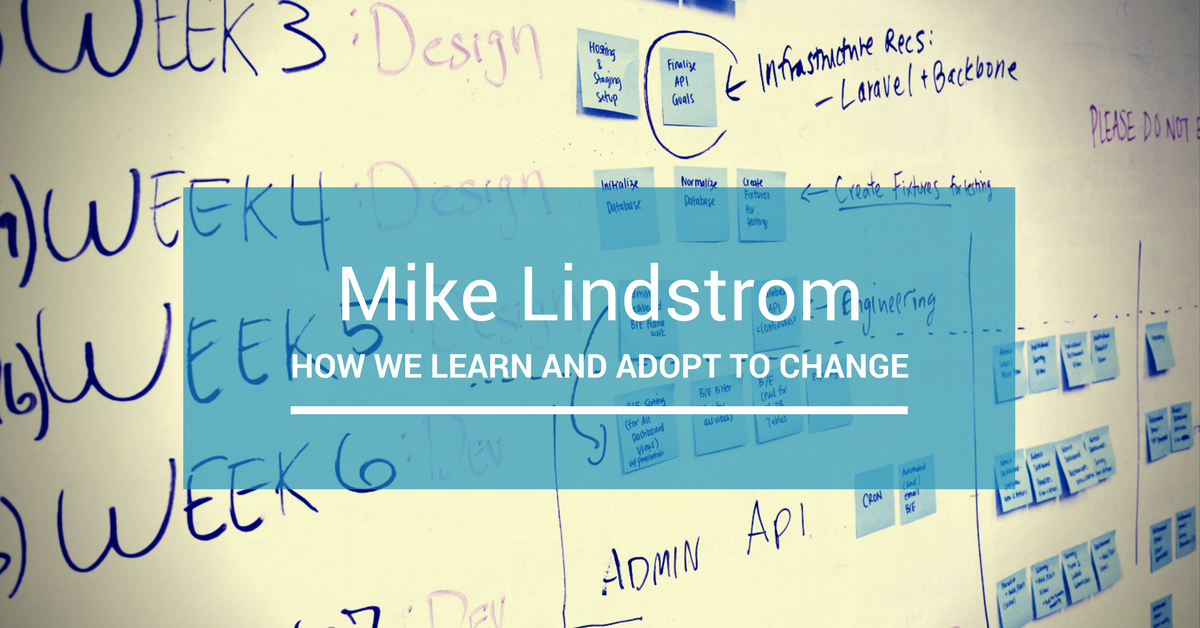How we Learn and Adapt to Change

Mike Lindstrom is an Author, Keynote Speaker and Communication Expert who was trained early in life by Tony Robbins on Psychology of Influence. Under the Robbins organization, Mike worked as an Executive Coach for Fortune 500 Companies across North America becoming on of the youngest Executive Coaches in the Robbins Results Coaching Company.
He’s a straight shooting, passionate leader who went out on his own after seeing the client base swell to more than 5,000 professionals. His impressive client base reads like a “Who’s Who in Corporate America” with a list of corporate executives, professional athletes, celebrities and even teenagers seeking that next level. Michael focuses on results and accountability. He appears on national and local media outlets like Fox News, CNN, Headline News to comment on topical issues.
In this show we discuss:
- How people learn and adopt new technologies and the process they take
- Quality of questions equals the quality of your life.
- Most people don’t ask good questions of self. If you ask bad questions, you get bad answers.
- We talk to ourselves at 1,000 words per minute
- Learning takes practice and repitition
- Learning is about being exposed to certain things initially and then doing it consistently over time. Much like learning a language.
- Issue Rule Analysis Conclusion in how to approach solving problems.
- We have to unlearn some things. Mike’s approach from shifting from logical legal approach to emotional learning and development.
- Introduction, body, conclusion. Tell me what you’re going to tell me, tell me, tell me what you told me. The principles of learning
- Understand the level of fluency in the person you are working with and make sure they are aware of your fluency. Go back to the basics of communication.
- Most people don’t immerse themselves into what they need to know. Most are not committed to mastery.
- Pattern recognition is very important to know how to issue spot, what to apply and develop solutions.
- The repetition aspect of pattern recognition is important. Begin putting yourself in fail safe situations that allow you to develop pattern recognition.
- Put yourself out of your comfort zone 10 times a week. Most people don’t get the repetition that they need to develop pattern recognition. If you don’t work for a leader that is placing you in these situations, do it yourself.
- How you encourage self awareness.
- The Awareness Model- Four steps
- Unconsciously Incompetent– You don’t know that you don’t know. If we become curious, we graduate to second level.
- Consciously Incompetent– You know that you don’t know. Go study, do you homework and now you will know what you know.
- Consciously Competent– I know what I know.
- Unconsciously Incompetent – When you become fluent in your work and your pattern recognition is very high. You’ve immersed yourself in study.
- As a Multifamily Executive or leaders, we often apply our values to other leaders. We need to understand how people view their role. Creating intrinsic results. Ask questions. What ever you believe you’re right. When you get people articulation in their own language patterns. We can’t see our own blind spots. When people articulate their own self beliefs it’s much better than imparting that on other people.
- People have success and it’s challenging to require change if we have a high level of success. Great leaders are always innovation. Themselves, the culture of the company and the business.
- Innovation and change- great leaders are always looking in the mirror. Great leaders are always confronting the brutal facts of the situation. If you are not growing, you’re dying.
- Use objective tools for leaders to measure behavior.
- How do you make decisions? Do you filter through fairness, right or wrong, money?
- Our natural instincts are a default without objective tools. The problem is we rely on what our parents taught us, mentors or other leaders. This means we rely on old school strategies. These can work but we have very effective tools available to us today.
- Invest in your company to understand what people think. Get objective Multifamily third party research
- Implementing change- some change we want to keep. It’s usually not about change itself.
- Test assumptions with people when working with objective tools. Dive deeper with people and use objective tools as a framework for good questions and conversation.
If you want to see if someone is effective, look at how people have trained themselves to create awareness and adapt to different types of people.
- Pattern interrupts- The easiest analysis one can give. Identify one area of self where you are not doing well. Put a microscope on it. Ask why the results are not there. Brainstorm with the team. Then ask the million dollar question. What are we going to do about it?
- If we are going to innovate, do what great leaders do. Confront the brutal facts and make change.
- Most leaders don’t want to look at deficiencies. Get a survey to better understand how people work together. Bring in a trusted resource.
- Leaders will push back when dealing with tough and often times known issues. They know they should, but don’t want to confront facts. It’s a tough thing to do. But success is on the other side of this fear.
- It might sting, but that is where you really grow as a person and company.
- We want to avoid pain. When we feel pain at looking at brutal facts it can be difficult. When you are committed to the journey of personal development big results follow for you and your company.
Connecting with Mike:
Twitter: @MikeLindstrom
Web: Mike Lindstrom
